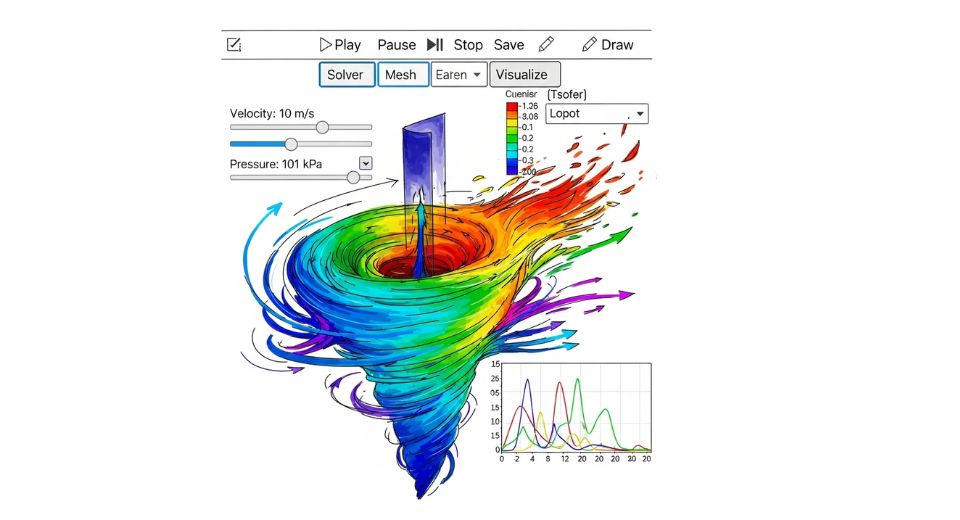
Jul 31, 2025

The recently published report available from Metastat Insight provides a penetrating insight into the Global Simulation Software Market, a picture influenced by some slow motion changes in technology uptake, consumer demand, and industrial usage. Instead of being an idle snapshot of the situation, this in-depth report reveals a nuanced view of a part of the software sector that has developed past experimental deployments and now serves as a backbone for digital validation, predictive modeling, and cost-cutting measures in various industries.
What separates the Global Simulation Software Market of today is not merely its reach across different geographies or industries but the in-depth integration into the decision-making processes. Simulation software is no longer limited to laboratories or high-end research and development environments. It is integrated into workflows where engineering insight, design iteration, and system behavior assessment need to happen at unprecedented velocities. Thus, simulation software has moved from being optional aid to operational requirement. Companies, regardless of their primary industry, have started appreciating the benefits of forecasting performance results in virtual models prior to committing resources to physical prototypes or mass implementations.
A striking shift in the Global Simulation Software Market is the drift toward extremely flexible and scalable platforms. Those days are gone when end-users needed to adapt their operations to work within fixed software parameters. The transition is now focused on solutions that adapt to organizational requirements, with the ability to seamlessly integrate with existing infrastructure, be it cloud, on-premises, or hybrid. This flexibility is not merely a luxury; it has become a norm, particularly with industries having to deal with rising complexity in product creation and operational requirements. It addresses the need for tools not only to deliver precision but also to have the ability to grow with organizational development.
Innovation here is less about gimmicky upgrades and more about strategic enhancements. Simulation solution developers are working to make platforms easier to use without sacrificing the depth and precision these tools are renowned for. This tightrope act is difficult, but the payoff is substantial. By making interfaces easier to use without weakening them, software vendors are growing their footprint into departments outside of engineering reaching into marketing, logistics, and risk management. As a result, the Global Simulation Software Market is undergoing lateral growth, with applications extending well beyond its historical strongholds.
Another subdued but significant trend is the broadening appeal to mid-sized businesses and even start-ups. In the past, simulation solutions have commonly been viewed as the preserve of large multinationals with deep coffers and specialized personnel. That image is being slowly dismantled. Now, more affordable licensing models and cloud-based deployment are reducing the barriers, allowing smaller organizations to model processes, stress-test concepts, and predict outcomes with tools previously locked away from industry giants. This technology democratization, while incremental, is essentially redefining how innovation occurs at scale and pace.
Regionally, no one place has a monopoly on the story. Rather, the growth of the market illustrates a mosaic of development whereby various geographies are growing at different paces, influenced by their regulatory landscape, technological capabilities, and industrial orientation. While some areas focus on manufacturing simulations, others are strongly positioned toward virtual training environments, with some enclaves focusing on environmental and energy modeling. This segmentation gives the Global Simulation Software Market a subtle and multi-layered nature, rendering sweeping generalizations futile and counterproductive.
Also noteworthy is the growing convergence of simulation platforms and artificial intelligence. Machine learning features are not only improving simulation fidelity but also cutting time-to-result through adaptive algorithms that learn from what has been done before. This advancement does more than improve computational efficiency; it changes the user experience. When software starts to prescribe optimization routes and predict user actions, the boundary between passive tool and active partner begins to break down. These kinds of interactions highlight the future in which simulation software serves not only as a mirror to reality, but as a leading finger towards more informed decisions.
Furthermore, the training and education aspects are becoming significant points of contact in this arena. Organizations dedicated to preparing the next generation of business professionals now view simulation software as essential, rather than supplementary. This trend loops back into the industry by building a workforce already proficient in digital modeling, lowering onboarding times and maximizing software utility from day one. It's a strategic reinforcement cycle that pays dividends for both educators and businesses alike, ultimately driving a faster, more capable workforce.
No less critical, however, is the matter of interoperability. As organizations engage with so many digital tools across the board, those simulation platforms that can 'speak' other systems' language be it in design, manufacturing, or data analysis become the standout. The ability to share data effortlessly without the clunky translating and manual intervention has become a key differentiator that, in turn, greatly affects buying and deployment decisions.
In summary, the new report presented by Metastat Insight of the Global Simulation Software Market does more than provide an overview it captures a segment quietly being radically transformed. This is not a spectacle-driven industry but one developed through persistent, significant refinement that addresses actual needs. As simulation software becomes more embedded in day-to-day business operations, reaching further and becoming more sophisticated, the marketplace is a mirror of technological development as well as real-world usage. Those who remain active in this arena will not only see it grow, but be part of its continued development directed as much by customer requirements as the software itself.
Drop us an email at:
Call us on:
+1 214 613 5758
+91 73850 57479